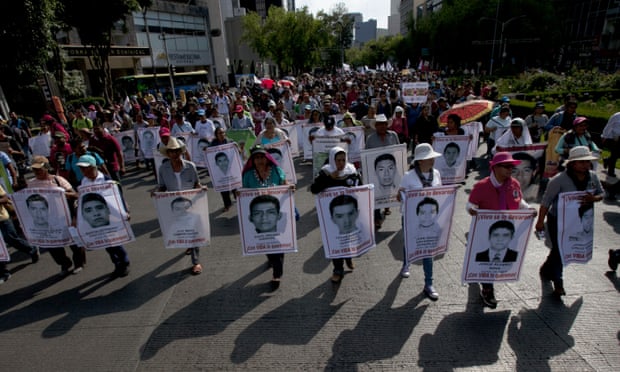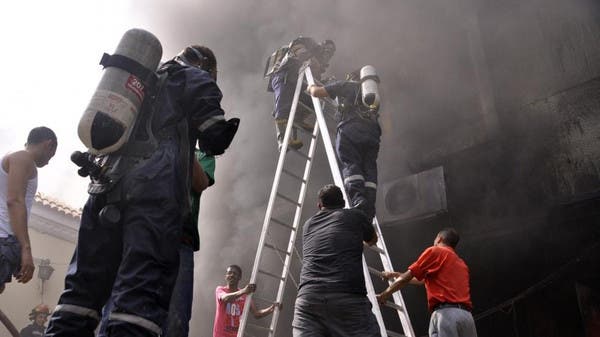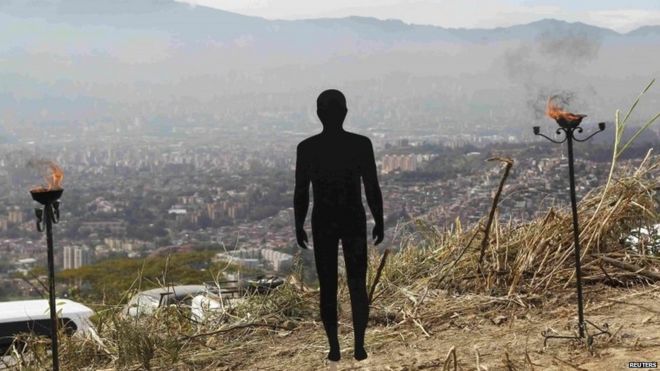
The search for 43 Mexican student teachers who disappeared after they were attacked by cartel gunmen and corrupt municipal police officers in September has unearthed the bodies of at least 129 other murder victims.
The corpses were found in 60 clandestine graves across Guerrero, the southern state where the youths vanished 10 months ago, the attorney general’s office said on Monday. None is thought to be linked to the case of the students from the Ayotzinapa teacher training college.
The new figures, which were released following a freedom of information request by the Associated Press, have prompted fresh anger at the government’s failure to tackle Mexico’s epidemic of disappearances – and its refusal to investigate allegations that the army may have also played a role in the Ayotzinapa attack.
Only 16 of the 129 bodies have so far been identified; 20 were women, 92 were men, while the gender of the rest has yet to be determined.
Many of the bodies were discovered by grieving families who launched their own search parties after the attack on the Ayotzinapa students.
The attack, in the town of Iguala about 190km (120 miles) south-west of the capital, left six dead and 43 trainee teachers missing. The case has prompted mass protests across Mexico and widespread international condemnation.
So far 110 people have been charged in relation to the attack, but no one has yet been prosecuted.
Scepticism about the official version of events continues to grow, and some relatives of the missing students still cling to the hope that they may still be alive.
Last week, the National Commission for Human Rights said it had found at least 30 omissions in the official investigation.
The government has so far rejected calls by an independent team sent by the Inter-American Commission on Human Rights to investigate the army’s possible involvement.
Omar García, who survived the attack, told the Guardian: “We’re living in a very serious situation where anyone can be disappeared and murdered, buried in a secret grave and be forgotten, unless their families look for them. The fact that only 16 people have been identified out of 129 shows the state’s lack of will to investigate. Mexico has forensic scientists and anthropologists capable of doing the work, but they’re not given access because there is no political will.”
In Guerrero, the actual number of bodies found since the students disappeared is likely to be higher as the new figures released by the attorney general includes graves discovered between October and May, and only those where specialists were involved in the exhumations.
Nonetheless, the staggering number of mass graves discovered in a single state has refocused attention on Mexico’s disappearance problem.
More than 23,000 people have been reported missing since 2006, and the whereabouts of most remain unknown. Meanwhile around 15,000 bodies have not been identified. Investigations are seriously hampered because there is still no reliable missing persons and DNA database.
Claudia Rangel Lozano, professor of sociology and history and expert in disappearances at Guerrero Autonomous University, said: “While the case of the 43 students has international attention, there are many more families in Guerrero, and all over Mexico, looking for disappeared relatives who the government has no interest in helping.
“It is outrageous and very sad that the state is more interested in issues like energy reform than helping families find their disappeared relatives. There are no trials, no one is punished, and no effort to understands the patterns of violence or the role played by the army, and so the terror continues.”
Meanwhile the relentless violence in Guerrero continues as warring drug cartels battle over opium growing territory and trafficking routes.
The latest murder figures released today revealed 943 murders in Guerrero in the first six months of the year – a 20% rise on the previous year.
Guerrero’s murder rate – 26 per 100,000 people – is four times higher than the national average.
“This latest macabre revelation confirms what we had already found: the sheer magnitude of the crisis of enforced disappearances in Guerrero and elsewhere in Mexico is truly shocking,” said Amnesty America’s Erika Guevara Rosas.
Tuesday 28 July 2015
http://www.theguardian.com/world/2015/jul/27/mexico-search-missing-students-129-bodies




